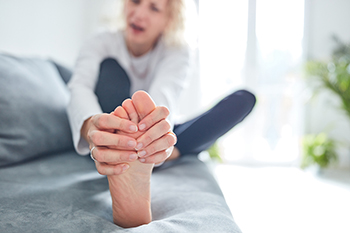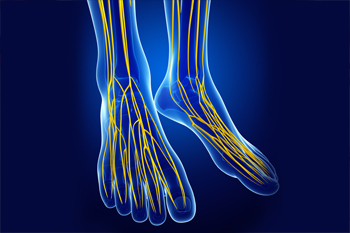
Walking is one of the most popular forms of exercise, mainly because it’s easy to do, costs relatively little money, and has a positive effect on general health. Another reason for its popularity is the low-impact nature of walking. It puts far less pressure on the joints, and the risk of injury is low. Walking is also believed to improve circulation, help control blood pressure, and release stress. To get started on walking as an exercise, experts suggest finding the proper footwear. This not only increases the benefits of walking, it also helps to prevent foot problems. Make sure the shoes are designed for walking and not running or another activity. Be aware of proper cushioning and arch support, both of which can help to ward off plantar fasciitis. It is beneficial to start out walking easy and work your way up to a total of about 150 minutes a week. Also, warming up before your walk and cooling down with stretches afterward are important ways to prevent injury. For more information about getting started with walking for exercise, it is suggested that you consult a podiatrist.
Exercising your feet regularly with the proper foot wear is a great way to prevent injuries and build strength. If you have any concerns about your feet, contact Dr. Lubrina Bryant from District Podiatry, PLLC. Our doctor can provide the care you need to keep you pain-free and on your feet.
Exercise for Your Feet
Exercise for your feet can help you gain strength, mobility and flexibility in your feet. They say that strengthening your feet can be just as rewarding as strengthening another part of the body. Your feet are very important, and we often forget about them in our daily tasks. But it is because of our feet that are we able to get going and do what we need to. For those of us fortunate enough to not have any foot problems, it is an important gesture to take care of them to ensure good health in the long run.
Some foot health exercises can include ankle pumps, tip-toeing, toe rises, lifting off the floor doing reps and sets, and flexing the toes. It is best to speak with Our doctor to determine an appropriate regimen for your needs. Everyone’s needs and bodies are different, and the activities required to maintain strength in the feet vary from individual to individual.
Once you get into a routine of doing regular exercise, you may notice a difference in your feet and how strong they may become.
If you have any questions please feel free to contact our office located in Washington, D.C . We offer the newest diagnostic and treatment technologies for all your foot and ankle needs.

You may look great in those high heels or strappy sandals, but studies show that women who wear these types of shoes are at much higher risk of future heel and ankle pain. When you take a step, the foot absorbs a certain amount of shock from your body’s weight. Sneakers and other types of athletic shoes contain enough cushioning to handle the shock and protect the foot. However, this is generally not the case with women’s shoes, and for this reason women report heel and ankle pain in far larger numbers than do men. In fact, more than 60 percent of women who report hind foot pain have worn high heels and pumps at some point in their lives. Therefore, it is believed that past wearing of this type of shoe is a key factor in developing foot pain later in life. If you are having heel and ankle pain, it is suggested that you consult a podiatrist for guidance on proper footwear and other treatment options.
High heels have a history of causing foot and ankle problems. If you have any concerns about your feet or ankles, contact Dr. Lubrina Bryant from District Podiatry, PLLC. Our doctor can provide the care you need to keep you pain-free and on your feet.
Effects of High Heels on the Feet
High heels are popular shoes among women because of their many styles and societal appeal. Despite this, high heels can still cause many health problems if worn too frequently.
Which Parts of My Body Will Be Affected by High Heels?
What Kinds of Foot Problems Can Develop from Wearing High Heels?
How Can I Still Wear High Heels and Maintain Foot Health?
If you want to wear high heeled shoes, make sure that you are not wearing them every day, as this will help prevent long term physical problems. Try wearing thicker heels as opposed to stilettos to distribute weight more evenly across the feet. Always make sure you are wearing the proper shoes for the right occasion, such as sneakers for exercising. If you walk to work, try carrying your heels with you and changing into them once you arrive at work. Adding inserts to your heels can help cushion your feet and absorb shock. Full foot inserts or metatarsal pads are available.
If you have any questions please feel free to contact our office located in Washington, D.C . We offer the newest diagnostic and treatment technologies for all your foot and ankle needs.

Foot pain is often ignored until it impacts everyday routines. Having chronic foot pain may cause unstable foot function, which can increase the chances of falling. Common reasons for foot pain can include obesity and wearing shoes that do not fit correctly for extended periods. A stress fracture can be a likely cause of foot pain and can cause difficulty in walking. Heel pain can come from plantar fasciitis, a heel spur, or an Achilles tendon injury. General foot pain may be indicative of psoriatic arthritis and can affect the toenails, heels, and soles of the feet. Additionally, gout is a form of arthritis that often targets the joints in the big toe. Gout occurs due to excess uric acid levels in the blood which may come from specific types of foods that are eaten. If you have foot pain for any reason, it is strongly suggested that you consult with a podiatrist who can properly diagnose and treat various types of foot pain.
Foot Pain
Foot pain can be extremely painful and debilitating. If you have a foot pain, consult with Dr. Lubrina Bryant from District Podiatry, PLLC. Our doctor will assess your condition and provide you with quality foot and ankle treatment.
Causes
Foot pain is a very broad condition that could be caused by one or more ailments. The most common include:
Diagnosis
To figure out the cause of foot pain, podiatrists utilize several different methods. This can range from simple visual inspections and sensation tests to X-rays and MRI scans. Prior medical history, family medical history, and any recent physical traumatic events will all be taken into consideration for a proper diagnosis.
Treatment
Treatment depends upon the cause of the foot pain. Whether it is resting, staying off the foot, or having surgery; podiatrists have a number of treatment options available for foot pain.
If you have any questions, please feel free to contact our office located in Washington, D.C . We offer the newest diagnostic and treatment technologies for all your foot care needs.

What is termed the common peroneal nerve provides sensation to the front and sides of the leg and the top of the feet. It also controls the muscles that lift the ankle and toes upward. Symptoms felt when the peroneal nerve is injured include numbness, tingling, pain, and weakness. This damage is also responsible for a condition known as foot drop, which affects the way you walk. Damage to the peroneal nerve can be caused by something as simple as crossing the legs for too long a period, or even wearing boots that have heels that are too high. It also can be caused by a crippling genetic condition called Charcot-Marie-Booth disease or by other underlying diseases, such as diabetes. The inability to flex the foot or to take a normal footstep may indicate a peroneal nerve injury. It is not always easy to detect this type of injury, so making an appointment with a podiatrist is suggested for a thorough examination. Treatment may vary depending on the location and severity of the injury.
Neuropathy
Neuropathy can be a potentially serious condition, especially if it is left undiagnosed. If you have any concerns that you may be experiencing nerve loss in your feet, consult with Dr. Lubrina Bryant from District Podiatry, PLLC. Our doctor will assess your condition and provide you with quality foot and ankle treatment for neuropathy.
What Is Neuropathy?
Neuropathy is a condition that leads to damage to the nerves in the body. Peripheral neuropathy, or neuropathy that affects your peripheral nervous system, usually occurs in the feet. Neuropathy can be triggered by a number of different causes. Such causes include diabetes, infections, cancers, disorders, and toxic substances.
Symptoms of Neuropathy Include:
Those with diabetes are at serious risk due to being unable to feel an ulcer on their feet. Diabetics usually also suffer from poor blood circulation. This can lead to the wound not healing, infections occurring, and the limb may have to be amputated.
Treatment
To treat neuropathy in the foot, podiatrists will first diagnose the cause of the neuropathy. Figuring out the underlying cause of the neuropathy will allow the podiatrist to prescribe the best treatment, whether it be caused by diabetes, toxic substance exposure, infection, etc. If the nerve has not died, then it’s possible that sensation may be able to return to the foot.
Pain medication may be issued for pain. Electrical nerve stimulation can be used to stimulate nerves. If the neuropathy is caused from pressure on the nerves, then surgery may be necessary.
If you have any questions, please feel free to contact our office located in Washington, D.C . We offer the newest diagnostic and treatment technologies for all your foot care needs.